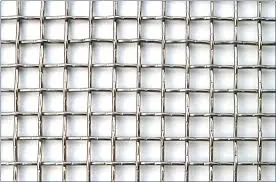-
+86 15030157877
-
sales@galvanizedmetalmesh.com
Aug . 12, 2024 12:26 Back to list
Hexagonal Galvanized Wire Mesh Supplier for Durable and Versatile Construction Applications Worldwide
Understanding Hexagonal Galvanized Wire Mesh and Its Export Market
Hexagonal galvanized wire mesh is a versatile and durable product widely used in various applications ranging from construction to agriculture. This type of mesh is made by weaving together galvanized steel wires into a hexagonal pattern, which not only enhances its strength but also provides resistance to corrosion. As a result, hexagonal galvanized wire mesh has become a significant export product for many manufacturers around the world.
The Characteristics of Hexagonal Galvanized Wire Mesh
One of the defining features of hexagonal galvanized wire mesh is its unique hexagonal shape. This design allows for optimum strength and flexibility, making it ideal for a variety of uses. The wires are typically coated with a layer of zinc through a galvanization process, which protects them from rust and other forms of corrosion. This is particularly important for applications exposed to harsh weather conditions or environments with high moisture levels.
The mesh comes in various wire gauges and openings, allowing customers to choose the product that best suits their needs. It is also available in different roll sizes, facilitating easy handling and transport. Common uses for hexagonal galvanized wire mesh include fencing for gardens and agricultural fields, reinforcement for concrete and masonry, and barriers to control soil erosion.
The Global Export Market
The export market for hexagonal galvanized wire mesh has seen significant growth due to its increasing demand in various sectors, including construction, agriculture, and landscaping. Countries with robust manufacturing capabilities, such as China, the United States, and several European nations, have emerged as major exporters. These countries leverage advanced manufacturing technologies and economies of scale to supply high-quality products at competitive prices.
In recent years, several factors have contributed to the surging demand for hexagonal galvanized wire mesh. The construction industry, in particular, has experienced a boom in infrastructure development, leading to an increased need for durable building materials. Simultaneously, the agricultural sector has recognized the benefits of using this mesh for fencing livestock and protecting crops from pests.
hexagonal galvanized wire mesh exporter

Quality Standards and Regulations
Exporters of hexagonal galvanized wire mesh must adhere to stringent quality standards and regulations to ensure their products meet international specifications. Various countries have established guidelines regarding the materials used, wire quality, and the manufacturing processes involved. Compliance with these standards not only improves product reliability but also enhances the reputation of exporters in the global market.
Moreover, environmental concerns have driven manufacturers to adopt more sustainable practices. The use of eco-friendly galvanization processes, for example, is becoming increasingly popular as businesses strive to reduce their carbon footprints. This shift not only attracts environmentally conscious buyers but also positions manufacturers as forward-thinking entities committed to sustainable development.
Challenges in the Export Market
Despite the promising outlook, exporters of hexagonal galvanized wire mesh face several challenges. Fluctuations in raw material prices can impact production costs, leading to variations in pricing strategies. Additionally, competition from low-cost producers in some regions can threaten the market share of established exporters.
Geopolitical factors and trade policies also play a crucial role in shaping the export dynamics. Tariffs and quotas can hinder market access for exporters, while favorable trade agreements can open up new opportunities. Navigating these challenges requires a deep understanding of the global market landscape and proactive strategies to adapt to changing conditions.
Conclusion
Hexagonal galvanized wire mesh represents a crucial component in various industries, admired for its strength and durability. As the export market continues to expand, manufacturers must focus on quality, sustainability, and compliance with international standards to thrive. By overcoming the challenges of fluctuating prices and competitive pressures, exporters can capitalize on the growing global demand for this essential product.
-
Welded Gabion Solutions: Durable & AI-Enhanced Designs
NewsAug.01,2025
-
Premium Welded Gabion Mesh | Robust & Eco-Friendly
NewsJul.31,2025
-
Premium Eco-Friendly Roof Tiles | Affordable & Durable
NewsJul.31,2025
-
Premium Roof Tiles for Durable & Stylish Roofing Solutions
NewsJul.30,2025
-
High-Quality Roof Tiles for Durable & Stylish Roofing Solutions
NewsJul.29,2025
-
High Quality Square Wire Mesh Manufacturer & Supplier for Wholesale
NewsJul.29,2025



